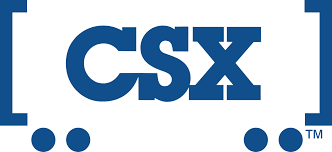Stedi maintains this guide based on public documentation from CSX. Contact CSX for official EDI specifications. To report any errors in this guide, please contact us.

X12 322 Equipment tracking, parameter trace, event notification
—
Delimiters
- ~ Segment
- * Element
- > Component
- ^ Repetition
EDI samples
- None included
Powered by
Build EDI implementation guides at stedi.com
Overview
ISA
-
Interchange Control Header
Max use 1
Required
GS
-
Functional Group Header
Max use 1
Required
heading
ST
0100
Transaction Set Header
Max use 1
Required
Q5
0160
Status Details
Max use 1
Required
N7 Loop
SE
3100
Transaction Set Trailer
Max use 1
Required
GE
-
Functional Group Trailer
Max use 1
Required
IEA
-
Interchange Control Trailer
Max use 1
Required
—
- 00
- No Authorization Information Present (No Meaningful Information in I02)
—
- 00
- No Security Information Present (No Meaningful Information in I04)
—
- 01
- Duns (Dun & Bradstreet)
- 02
- SCAC (Standard Carrier Alpha Code)
- 12
- Phone (Telephone Companies)
- ZZ
- Mutually Defined
—
- 00705
- Standards Approved for Publication by ASC X12 Procedures Review Board through December 2017
—
- 0
- No Interchange Acknowledgment Requested
—
- I
- Information
- P
- Production Data
- T
- Test Data
—
- SO
- Ocean Shipment Information (304, 311, 317, 319, 322, 323, 324, 325, 326, 361)
—
- T
- Transportation Data Coordinating Committee (TDCC)
- X
- Accredited Standards Committee X12
Heading
Q5
0160
Heading > Q5
Status Details
RequiredMax use 1
—
Example
If either Time (Q5-03) or Time Code (Q5-04) is present, then the other is required
If State or Province Code (Q5-07) is present, then City Name (Q5-06) is required
If either Reference Identification Qualifier (Q5-11) or Reference Identification (Q5-12) is present, then the other is required
If either Reference Identification Qualifier (Q5-14) or Reference Identification (Q5-15) is present, then the other is required
—
- A
- Arrived
- AL
- Loaded on Rail
- AR
- Rail Arrival at Destination Intermodal Ramp
- B
- Bad Order (Inoperative or Damaged)
- CB
- Chassis Tie
- CC
- Chassis Un-Tie
- G
- Repaired and/or Released from Bad Order
- I
- In-Gate
- J
- Delivered to Connecting Line
- NF
- Free Time to Expire
- NT
- Notification
- OA
- Out-Gate
- R
- Received from Prior Carrier
- RL
- Rail Departure from Origin Intermodal Ramp
- RN
- Renotification
- UR
- Unloaded from a Rail Car
- W
- Released by Customer—
- Z
- Actually Placed
N7 Loop
RequiredMax >1
N7
0200
Heading > N7 Loop > N7
Equipment Details
RequiredMax use 1
—
Example
If either Weight (N7-03) or Weight Qualifier (N7-04) is present, then the other is required
DTM
0400
Heading > N7 Loop > DTM
Date/Time Reference
Max use 2
—
Usage notes
—
Example
If Time Code (DTM-04) is present, then Time (DTM-03) is required
At least one of Date (DTM-02), Time (DTM-03) or Date Time Period Format Qualifier (DTM-05) is required
If either Date Time Period Format Qualifier (DTM-05) or Date Time Period (DTM-06) is present, then the other is required
—
- 017
- Estimated Delivery
- 371
- Estimated Arrival Date
- 830
- Schedule
W2
0700
Heading > N7 Loop > W2
Equipment Identification
Max use 1
—
Example
If either Equipment Initial (W2-11) or Equipment Number (W2-12) is present, then the other is required
—
- BG
- Bogie
- BU
- Buffer Car
- CA
- Caboose
- CC
- Container resting on a Chassis
- CH
- Chassis
- CM
- Container, Open-Sided
- CN
- Container
- CX
- Container, Tank
- CZ
- Refrigerated Container
- ID
- Idler Car
- LO
- Locomotive
- LS
- Half Height Flat Rack
- OT
- Open-top/flatbed trailer
- PL
- Container, Platform
- PT
- Protected Trailer
- RR
- Rail Car
- SK
- Stack Car
- TL
- Trailer (not otherwise specified)
- TN
- Tank Car
R4 Loop
RequiredMax >1
R4
1200
Heading > N7 Loop > R4 Loop > R4
Port or Terminal
RequiredMax use 1
—
Example
If either Location Qualifier (R4-02) or Location Identifier (R4-03) is present, then the other is required
—
- 5
- Activity Location (Operational)
- 6
- Origin Rail Intermodal Terminal
- 7
- Destination Rail Intermodal Terminal
R4 Loop end
N1 Loop
Max >1
N1
1500
Heading > N7 Loop > N1 Loop > N1
Party Identification
RequiredMax use 1
—
Example
At least one of Name (N1-02) or Identification Code Qualifier (N1-03) is required
If either Identification Code Qualifier (N1-03) or Identification Code (N1-04) is present, then the other is required
—
- 1A
- CSX Internal Code
- CN
- Consignee
- MC
- Motor Carrier
- RD
- (Rail Waybill) Destination Intermodal Ramp
- RO
- (Rail Waybill) Original Intermodal Ramp
- SH
- Shipper
—
- 2
- Standard Carrier Alpha Code (SCAC)
- 20
- Standard Point Location Code (SPLC)
N1 Loop end
N7 Loop end
Heading end
Stedi is a registered trademark of Stedi, Inc. All names, logos, and brands of third parties listed on this page are trademarks of their respective owners (including “X12”, which is a trademark of X12 Incorporated). Stedi, Inc. and its products and services are not endorsed by, sponsored by, or affiliated with these third parties. Use of these names, logos, and brands is for identification purposes only, and does not imply any such endorsement, sponsorship, or affiliation.